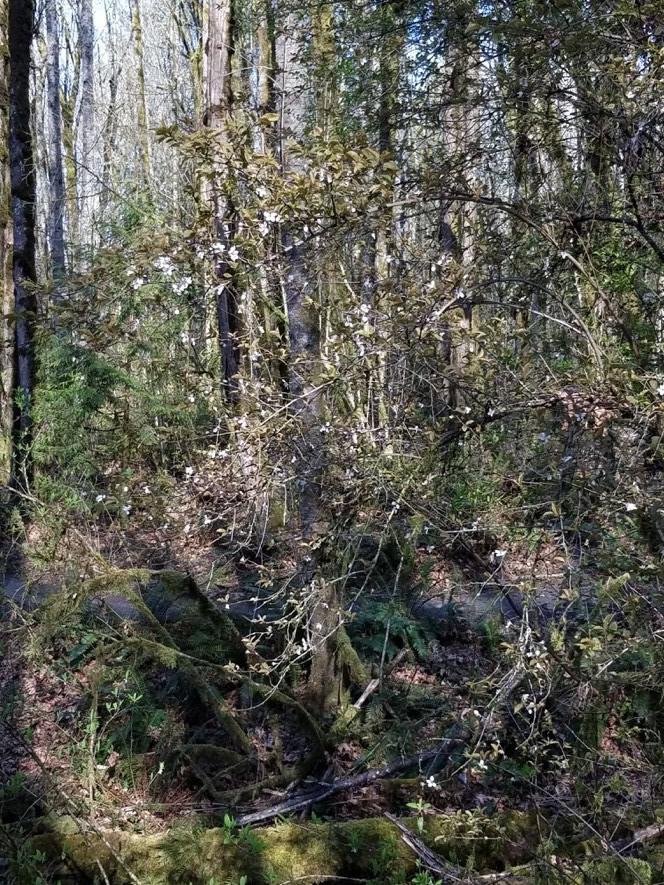
Cherry, Plum, and Laurel, Prunus species
Rosaceae—Rose Family
The generic name “Prunus” is Latin for “plum.” Many individual species of the genus Prunus have been cultivated over countless centuries in many parts of the world – peach and nectarine, apricot, almond, cherry, plum, prune, and laurel.
Wild cherry seedlings are constantly dispersed over fields, woodlands, and neighborhoods by birds and animals. Many, if not most, of the wild seedlings in our populated areas are probably escapees of cultivated cherries, especially Prunus avium (Sweet cherry of European origin) favored by birds as the species name implies, and Prunus cerasus (Sour cherry). Escaped varieties of sweet cherries are quite common, and may be distinguished from native cherries by relatively large leaves, between three to six inches long, and large sweet fruit. Other common species that have escaped to the wild include the flowering plum trees (several species) of neighborhood yards, and English laurel (Prunus laurocerasus) used to form dense hedges with glossy green leaves.
The native bitter cherry (Prunus emarginata) has oval leaves one to three inches long and produces bitter red to black fruit between 1/3 and ½ inch in size. Bitter cherry trees may attain a height of 50 to 80 feet and a diameter of 12 to 18 inches. The bark is shiny red-brown and peels in horizontal strips. Chokecherry (Prunus virginiana), another native, usually grows as a tall shrub and has 1.5 to 4 inch elliptical leaves with pointed tips. The dark red black fruit hang in characteristic racemiform (elongated) clusters. All cherry trees can be identified by the distinctive lenticels or pores circularly arranged around their trunks. Native cultures have widely used chokecherry for food. The pounded fruit is a major ingredient of pemmican to which dried meat is added. There is little historical mention of using bitter cherry for food. However, the lustrous dark bark of the bitter cherry is still an important material for the appealing designs of imbricated basketry (5-18).
Information courtesy of “The View From Springbrook Park; an Illustrated Natural History” by Ed Chinn.
Photos taken by Laura Tanz
Sponsored by Friends of Springbrook Park; Lake Oswego, OR